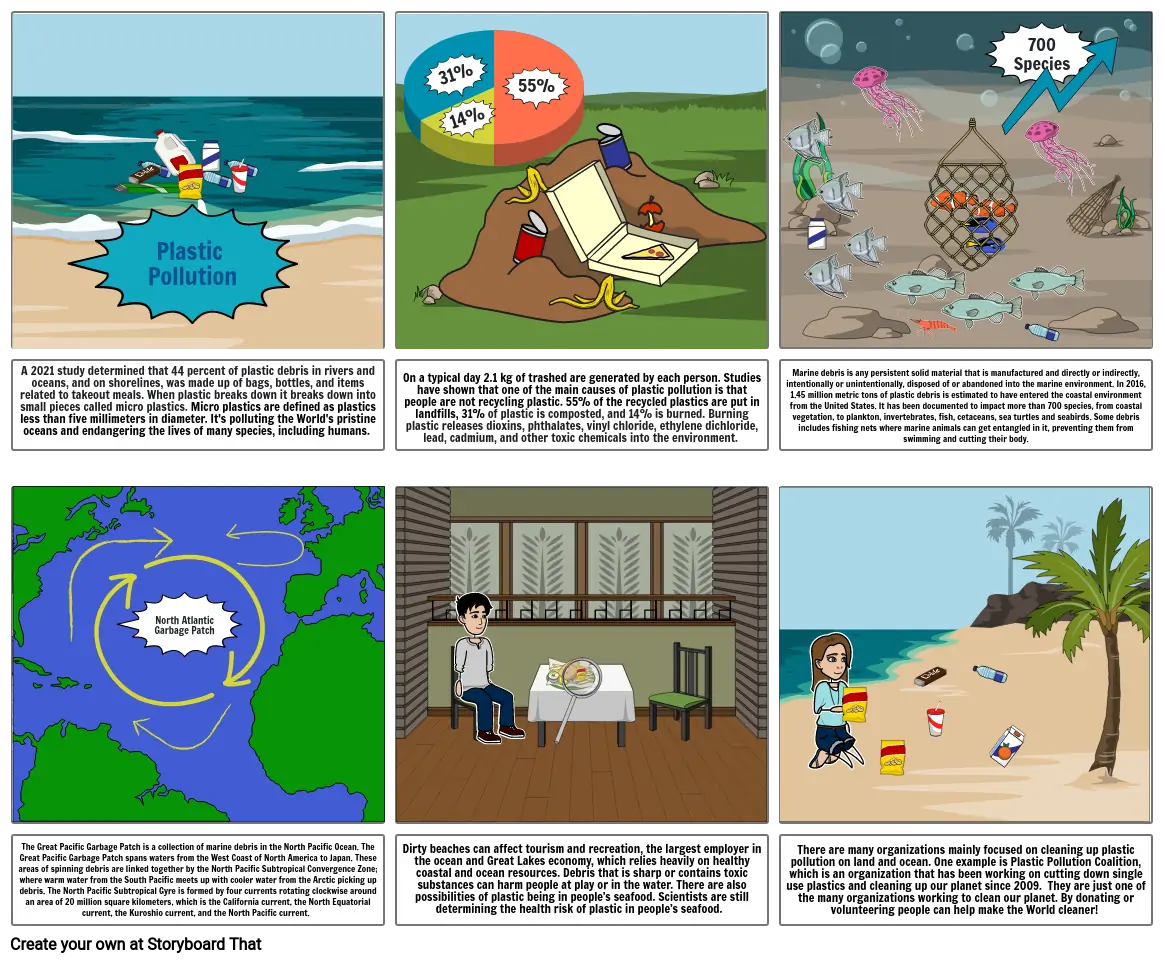plastic pollution

Storyboard Text
- Plastic Pollution
- 31%
- 14%
- 55%
- 700 Species
- A 2021 study determined that 44 percent of plastic debris in rivers and oceans, and on shorelines, was made up of bags, bottles, and items related to takeout meals. When plastic breaks down it breaks down into small pieces called micro plastics. Micro plastics are defined as plastics less than five millimeters in diameter. It's polluting the World's pristine oceans and endangering the lives of many species, including humans.
- North Atlantic Garbage Patch
- On a typical day 2.1 kg of trashed are generated by each person. Studies have shown that one of the main causes of plastic pollution is that people are not recycling plastic. 55% of the recycled plastics are put in landfills, 31% of plastic is composted, and 14% is burned. Burning plastic releases dioxins, phthalates, vinyl chloride, ethylene dichloride, lead, cadmium, and other toxic chemicals into the environment.
- Marine debris is any persistent solid material that is manufactured and directly or indirectly, intentionally or unintentionally, disposed of or abandoned into the marine environment. In 2016, 1.45 million metric tons of plastic debris is estimated to have entered the coastal environment from the United States. It has been documented to impact more than 700 species, from coastal vegetation, to plankton, invertebrates, fish, cetaceans, sea turtles and seabirds. Some debris includes fishing nets where marine animals can get entangled in it, preventing them from swimming and cutting their body.
- The Great Pacific Garbage Patch is a collection of marine debris in the North Pacific Ocean. The Great Pacific Garbage Patch spans waters from the West Coast of North America to Japan. These areas of spinning debris are linked together by the North Pacific Subtropical Convergence Zone; where warm water from the South Pacific meets up with cooler water from the Arctic picking up debris. The North Pacific Subtropical Gyre is formed by four currents rotating clockwise around an area of 20 million square kilometers, which is the California current, the North Equatorial current, the Kuroshio current, and the North Pacific current.
- Dirty beaches can affect tourism and recreation, the largest employer in the ocean and Great Lakes economy, which relies heavily on healthy coastal and ocean resources. Debris that is sharp or contains toxic substances can harm people at play or in the water. There are also possibilities of plastic being in people’s seafood. Scientists are still determining the health risk of plastic in people’s seafood.
- There are many organizations mainly focused on cleaning up plastic pollution on land and ocean. One example is Plastic Pollution Coalition, which is an organization that has been working on cutting down single use plastics and cleaning up our planet since 2009. They are just one of the many organizations working to clean our planet. By donating or volunteering people can help make the World cleaner!
Over 30 Million Storyboards Created
No Downloads, No Credit Card, and No Login Needed to Try!
